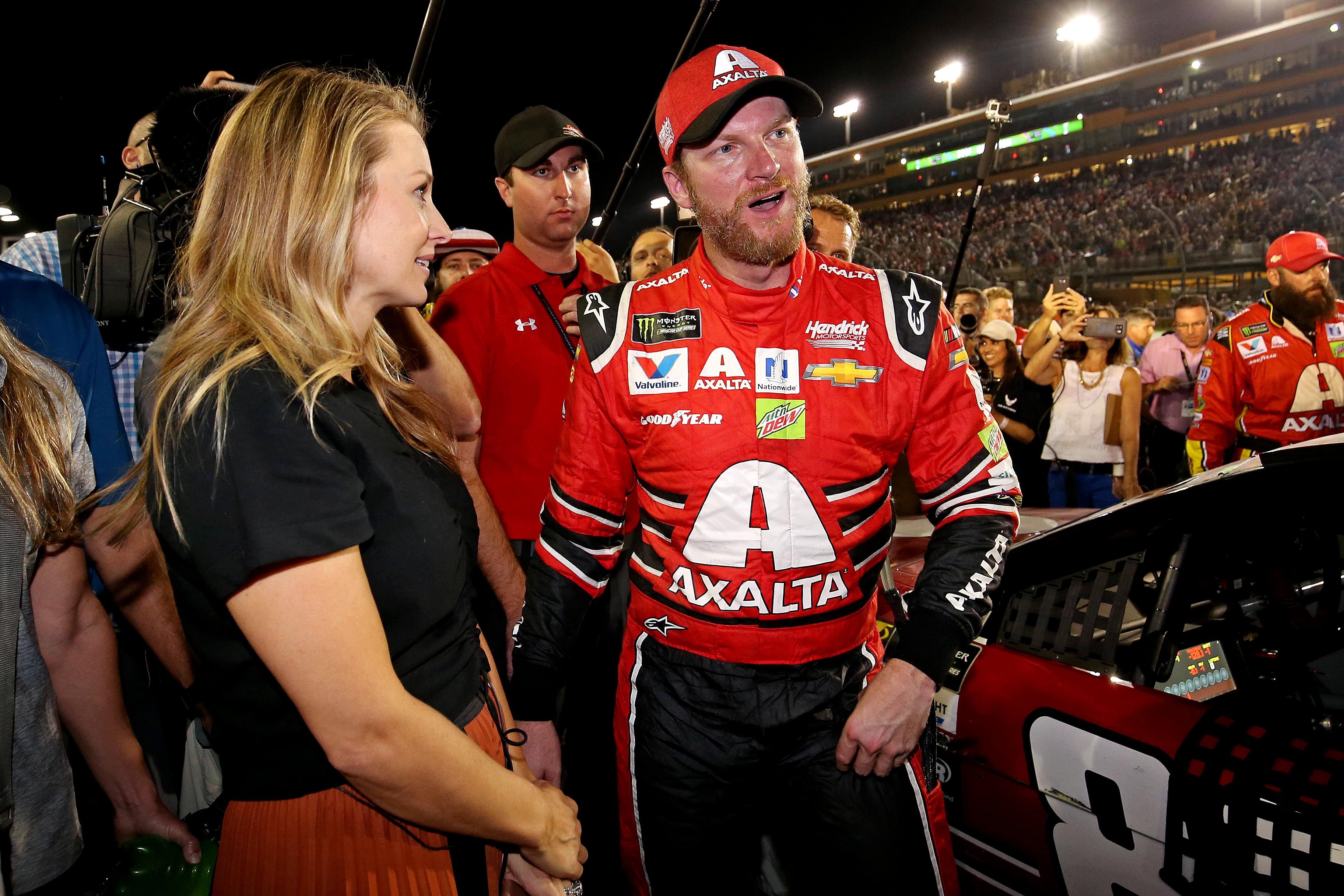
"She can't do anything about it" - When Dale Earnhardt Jr. spoke on his fears of hiding concussion symptoms from wife Amy
Six years ago, former NASCAR driver Dale Earnhardt Jr. shared how he tried to hide his concussion symptoms and why it was hard to explain them to his wife, Amy. In a 2018 interview with Graham Bensinger, Dale Earnhardt Jr. spoke about the struggles he went through while hiding his concussion symptoms from his wife.
The JR Motorsports owner also detailed how these symptoms made even simple tasks difficult.
"I was scared to death you know, I was just really frightened, I wasn't ready to let everyone know that that was going on, I was hoping that it would go away," Earnhardt Jr. said (01:50).
Earnhardt Jr. described feeling "drunk" and having trouble with things like “buckling a belt” and “tying a knot." He also faced vision issues.
"Now, trying to explain to someone who’s not a doctor and not really someone that can do anything about it—even though she’s my wife, I love her to death—it just does me no good to share it with someone, anyone, who can’t help me," he added (03:08).
According to him, he had over a dozen concussions in his career. Earnhardt Jr. got his first concussion in 1998. In 2012, he missed two races after getting two concussions in just two months.
The first one happened in August when he crashed into the wall after a tire blew out. The second concussion occurred in October when he was spun around quickly. He later joined a concussion program where rehab exercises helped him recover. Dale Earnhardt Jr. retired from full-time racing in 2017.
"Just out of fear of what was happening to me" - Dale Earnhardt Jr. on writing down his symptoms
Dale Earnhardt Jr. also talked about how he dealt with concussion symptoms that made him feel confused and unable to do simple tasks.
He explained in the same interview that he wrote down his symptoms on his mobile because he was worried they would not go away.
"I was writing that down just out of fear of what was happening to me...If I was to have another random, rare high-impact crash... I wanted there to be some sort of documentation of what had been happening to me,” Earnhardt Jr. said (04:16, 04:55).
"You know, that was just a way for me to draw a timeline of my improvement or progression through each incident. That way, if it was helpful to my doctor at some point—any point—if I ever... ever needed this information, 'cause I wasn’t gonna... I wasn’t gonna be able to remember it precisely..." he added (05:52).
Earnhardt Jr. had said earlier that he plans to donate his brain to the Concussion Legacy Foundation to help study CTE, a degenerative brain disorder related to contact sports.